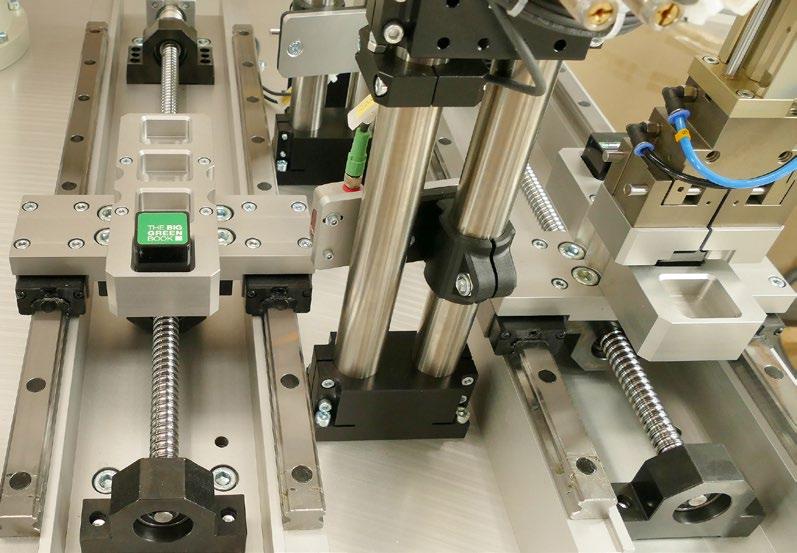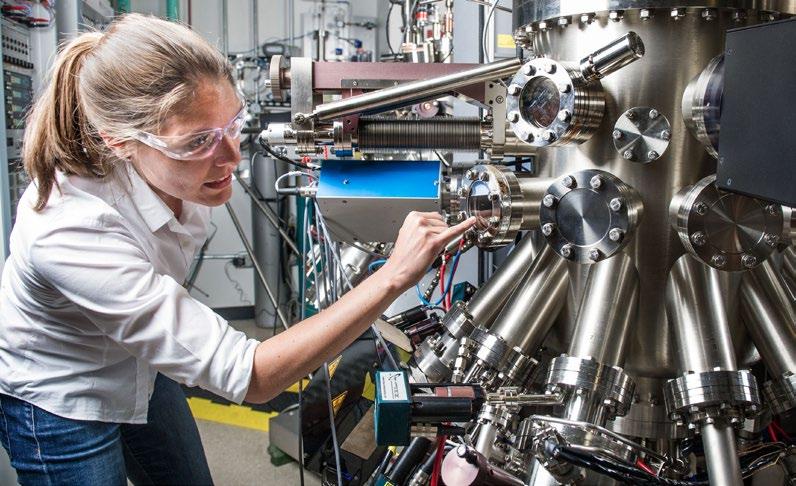
5 minute read
How Standard Components Minimise Downtime and Provide Business Continuity
David Messant, Production Manager at standard components specialist norelem, explores how standard components can be used to implement digital, supply chain and robotics solutions to minimise downtime and maximise productivity.
Traditionally, engineering and manufacturing has been dependent on human and machine working side by side. However, this reliance also creates risk – if a machine goes into unplanned downtime, or the machinery operator is not available, the whole production line can come to a halt. As a consequence, business revenue and profits suffer, and if not resolved quickly, then the business itself can be put in danger. For many manufacturers, increasing their resilience to these issues is crucial to survival, but can also be the key to unlocking even greater productivity potential. So-called ‘Industry 4.0’ technologies such as automation, AI and digitisation are already allowing businesses to stay on-line, helping to boost productivity and streamline production.
However, while sweeping technological changes in the factory or plant is the ideal, in practice, this can take months, if not years, to fully implement, and may
not always be accessible. This is where manufacturers can look to standard components instead, which have the ability to reduce costs, maximise efficiencies across production, and make plants more resistant to unforeseen circumstances.
Resilience and flexibility
One such way that standard components contribute to increased resilience is that they provide much needed flexibility. This flexibility is in line with one of the buzz phrases of recent years, the ‘factory of the future’.
These factories are defined by their advanced manufacturing technologies and have certain traits, one of which is being able to rapidly shift production and adapt to meet demand. To do this though, production lines need to be reconfigured by engineers fast.
Here is where standard components have their part to play. Rather than investing in bespoke, complex machinery and costly bespoke components, engineers can use standard components to change the setup of the factory quickly and easily.

Parts like gears, worm drives, guide rails, motorised positioning systems and more are all available in a standardised range of sizes and materials from norelem. It is simply a case of having the knowledge, know-how and access to ensure that businesses assemble new machines.
With machines made from standard components, it also offers added protection in that if any component needs to be taken out of service, the part can be quickly sourced and replaced, helping to minimise the likelihood of lengthy, unexpected breakdowns.
The role of automation in maximising productivity
Automation has transformed the manufacturing sector over the past two decades. Large robotic arms which loom over the factory floor are commonplace now. Meanwhile, smaller collaborative robots (or ‘cobots’) are working safely alongside their human counterparts to diligently take care of the repetitive, dull and dirty jobs. It’s clear that automation is key to modern manufacturing. While no one can predict next steps for manufacturing, it stands to reason that manufacturers may start to explore how robotics and automation can help their business - both in terms of scaling production and enabling operations to continue in the event of staff shortages. While many people fear that robots are taking over jobs, taking this step does not necessarily negate the need for humans, as people are essential to overseeing operations and interpreting data.
However, the obstacle that many smallto-medium manufacturers find is that the initial outlay, maintenance and servicing of new machinery prevents them from deploying robotics.
This is where standard components can put automation within reach. With drives, controls, belts, pulleys, gears and more all available in various standardised sizes and materials, manufacturers can quickly and easily automate different parts of their processes, without the need for bespoke, costly components and thirdparty engineers.

Embracing digitisation and remote working
Leading on from automation is the need to embrace digitisation and remote working. Certainly, recent events have highlighted an obvious weakness in the manufacturing sector, which is that without people at the side of machines to oversee operations, production grinds to a halt.
To overcome this weakness, it is imperative that the manufacturing sector is able to adapt to different working conditions, such as having the ability to manage robots remotely. However, although technology is starting to allow operators to control machines off-site, the maintenance side of manufacturing is a lot trickier.
This is because the need for maintenance is usually determined by visual inspections but being off-site does not allow this option. If there is no process in place for remote maintenance alongside remote working, then this can introduce dangers such as components wearing away beyond repair, and unexpected machinery failure.
To resolve this, elements of machinery can be digitised to allow maintenance engineers to diagnose problems and solve issues remotely.
For example, by adding sensors to equipment, engineers can monitor physical parameters such as heat and vibration. This eliminates the need for lengthy and tedious diagnosis testing, while increasing the likelihood of a firsttime-fix versus multiple visits to the site. Having access to data also ensures that the right parts and standard components can be ordered, and the machine can be repaired as quickly as possible.
Standard components – The backbone of engineering
Turbulent times can rock any business, but with the typically hands-on nature of engineering and manufacturing, the effects are felt much more acutely. To ride out any storms in times ahead, manufacturers must be flexible. The ability to monitor, control, adjust and adapt processes is vital to minimising downtime, increasing productivity and ensuring business continuity in the future.
While there’s plenty of noise around the benefits that can be realised by new, disruptive and often confusing technologies, in times of crisis many find solace in what they know. Standard components are the backbone of manufacturing, simplifying the process of ensuring that business can focus on a speedy return to maximum efficiency.










